The first jet and first supersonic fighters of the USSR were created at the Mikoyan Design Bureau. The MiGs set 110 world records, 49 of which so far have not been surpassed by any aircraft of Russian or foreign production. Over 80 years, more than 450 aircraft projects have been developed. The serial production of MiG aircraft around the world exceeded the mark of 60 thousand units. And today, the company produces combat vehicles that successfully compete on the world stage.
Tandem of Mikoyan and Gurevich
Domestic history knows several design tandems, the most famous of which is the cooperation of aircraft builders Artyom Ivanovich Mikoyan and Mikhail Iosifovich Gurevich. They successfully complemented each other, but, despite his seniority and brilliant education, Gurevich always remained in the shadow of his colleague.
Designers met at OKB Nikolai Polikarpov, the “father” of the first Soviet fighters. The fighting of the 1930s in the Far East and Spain showed that the Soviet I-15, I-16 and the new I-153 Chaika are inferior in performance to the German Messershmites Bf 109E. The Red Army Air Force needed a modern fighter that could reach speeds of over 600 km/h, have a large practical ceiling and modern weapons.
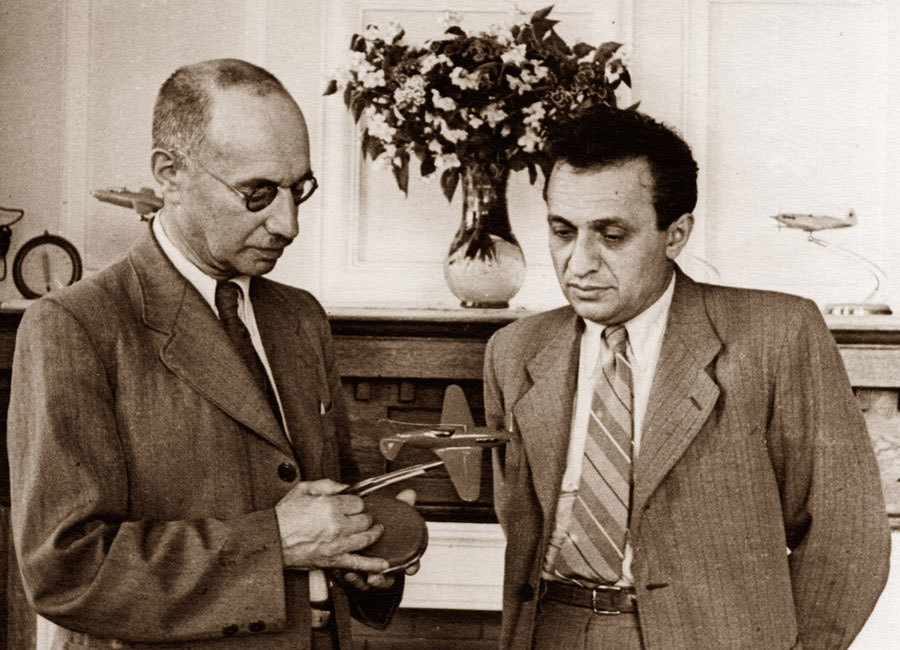
Aircraft designers Mikhail Iosifovich Gurevich and Artem Ivanovich Mikoyan with a model of the MiG-3 fighter
The Second World War, which began in 1939 and the armed conflict between the USSR and Finland, aggravated the need for immediate renewal of the Red Army Air Force fleet.
Already in November 1939, the project of a new aircraft was chosen at the country's largest aircraft manufacturing enterprise - Aviation Plant No. 1 - it was the I-200 OKB Polikarpov high-speed fighter. Especially for its creation, a special design department was formed. Mikoyan became the head of the new OKO, and Gurevich became his deputy.
In a fantastically short time — 132 days — an I-200 fighter was created, later named after the MiG-1 designers.
The development of the MiG-1 was its improved modification of the MiG-3 with an increased flight range. The aircraft could reach a speed of 640 km/h, which was a record of the time for production vehicles.
During the Great Patriotic War, 27 pilots who fought on the MiG-3 were awarded the title Hero of the Soviet Union. A special role belongs to the MiG-3 fighters, who defended the skies of Moscow and Leningrad as part of air defence during the war, as fighter aircraft was the main means of combating the air enemy. It was on the MiG-3 that ace pilot Alexander Pokryshkin began his victorious journey.
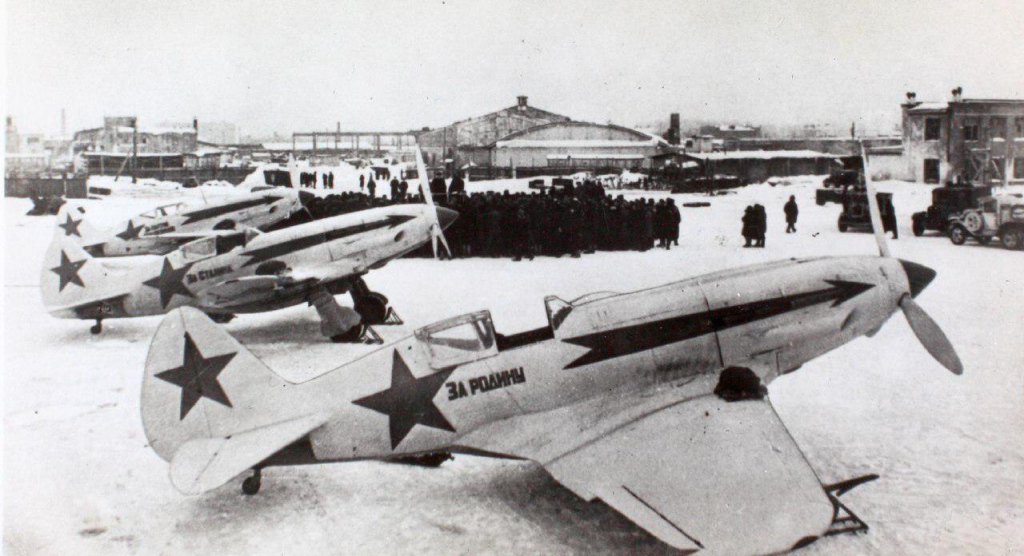
MiG-3 fighter
For the successful fulfilment of the government’s assignment, the staff of Plant No. 1 and the OKO received high government awards, and Mikoyan and Gurevich became laureates of the Stalin Prize of the first degree.
In the spring of 1942, the OKO Mikoyan returned from Kuibyshev, where aircraft factory No. 1 was evacuated in 1941. A new enterprise appears - experimental plant No. 155 (OKB-155), whose director and chief designer Artyom Ivanovich is appointed. During the war years, the team of Mikoyan and Gurevich created several prototypes of aircraft, but they did not go into mass production. However, these works helped the Design Bureau maintain its potential so that after the war it could begin to develop jet aircraft that nominated Mikoyan's Design Bureau as world leaders in aircraft manufacturing.
Beginning of the jet era
Already at the end of the war, Mikoyan and Gurevich enter the race of design bureaus for their superiority in creating a jet aircraft. Four design bureaus participated in it: Yakovlev, Sukhoi, Lavochkin and Mikoyan. In the development of the Mikoyan Design Bureau, there was originally an I-290 fighter with two engines under the wing, which was subsequently converted to the I-300 with a power plant in the fuselage. As a result, it was the second option that went into a series called MiG-9. April 24, 1946, he became the first Soviet jet fighter with a turbojet engine to fly into the air. On the same day, the Yakovlev’s Design Bureau Yak-15 fighter, which was also mass-produced, took off into the sky.
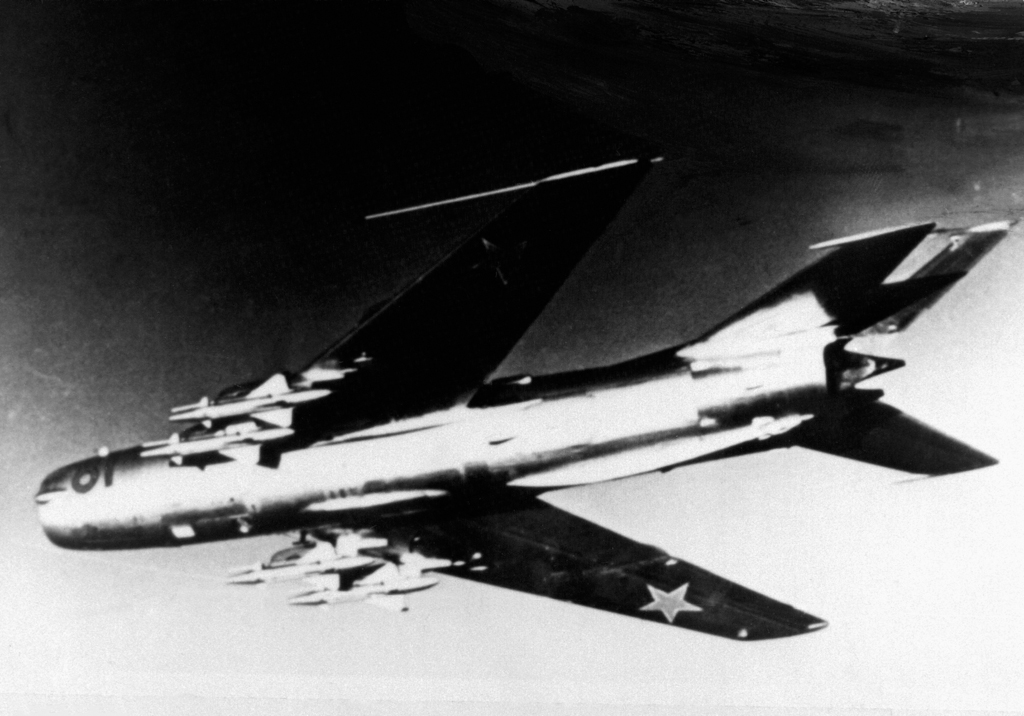
MiG-19 fighter
In 1946, A.I. Mikoyan together with aircraft engine designer V.Ya. Klimov goes to England to purchase modern engines. By the end of 1947, according to the plan of the Mikoyan Design Bureau, the government was to create a new front-line fighter. MiG-15 became the most massive jet aircraft in the world. In total, more than 17 thousand vehicles were produced, which were in service with 40 countries. It was a definite success of the “migrants”.
The next Design Bureau’s fighter was the MiG-17, which has been mass-produced since 1951. He is deservedly considered the best subsonic fighter in the world, which came close to flying at the speed of sound. MiG-17P and MiG-17PF became the first mass domestic all-weather fighter-interceptors, entered service with air defence aircraft.
The first supersonic production aircraft was the MiG-19. During its development, in close cooperation with Central Institute of Aerohydrodynamics, related research institutes and design bureaus, a number of new scientific and technical issues were resolved, such as the development of a supersonic aerodynamic layout, the introduction of an irreversible booster control system and an air conditioning system for the cockpit. But one of the most famous models of Mikoyan and Gurevich was the third-generation supersonic fighter MiG-21, which was produced 30 years in a row in the Soviet Union. Also, under license, the aircraft was manufactured in Czechoslovakia, India and China, where its production ceased only in 2017. The flight speed of the MiG-21 was twice the speed of sound. This plane was set 24 world records. And today, in anticipation of 2020, it is still operated by the armies of some countries.
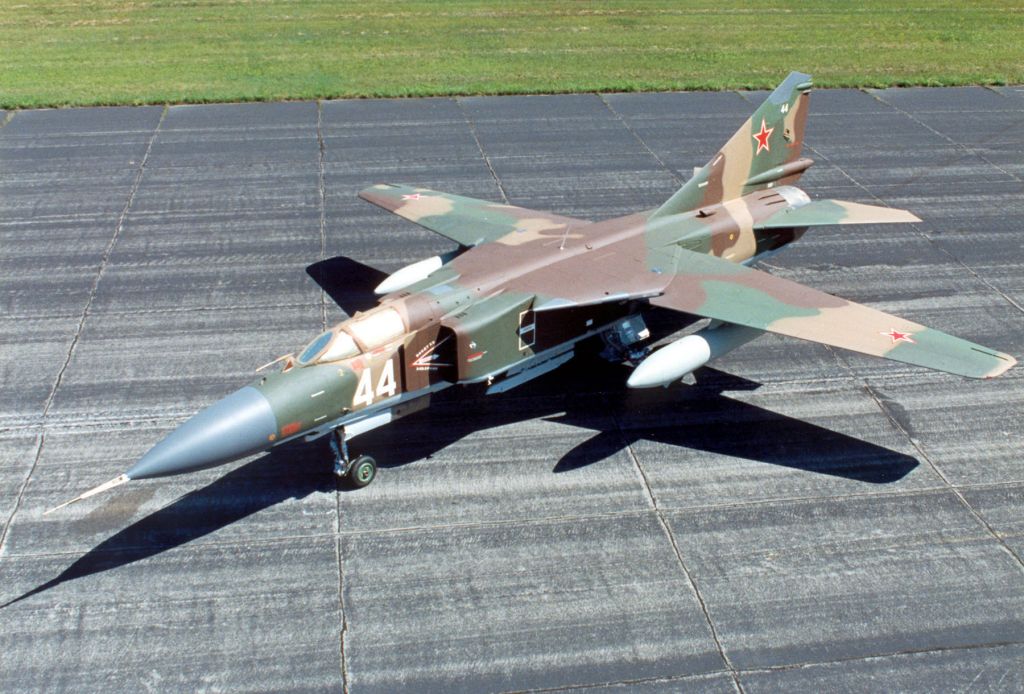
MiG-23 fighter
The MiG-23, the first Soviet aircraft with variable sweep of the wing, and the MiG-25, whose speed was three times higher than the speed of sound, and the flight altitude of 37,650 m - an absolute world record, became Mikoyan's last lifetime work.
In 1970, Artem Ivanovich died at the age of 65. In 1971, the Design Bureau was given his name. Mikhail Iosifovich Gurevich retired in 1964, but survived his partner for 6 years, having died in 1976.
MiG for space and fourth-generation fighters
Since 1965, the Mikoyan Design Bureau has been involved in work on an unusual topic - the experimental manned orbital aircraft (EPOS). The program was called the "Spiral", and within its framework, Design Bureau employees developed and built a subsonic analogue aircraft 105.11. During experimental flights, the Tu-95K carrier carrier dropped it from a height of 6 km. In 1977-1978, 6 flights were performed, the results of which were later used to create the legendary reusable space shuttle Buran.
In 1968, the Mikoyan Design Bureau began work on the first Soviet fourth-generation fighter E-155MP (future MiG-31). The long-range fighter-interceptor was equipped with the latest equipment, including the world's first radar with a phased antenna array. In 1979, the MiG-31 went into series, and today its modified versions are used in the Russian Aerospace Forces. In March 2018, Russian President Vladimir Putin for the first time in a message to the Federal Assembly demonstrated the launch of the latest dagger aviation hypersonic missile from the MiG-31 high-speed carrier aircraft. There are no analogues to this aviation complex in the world.
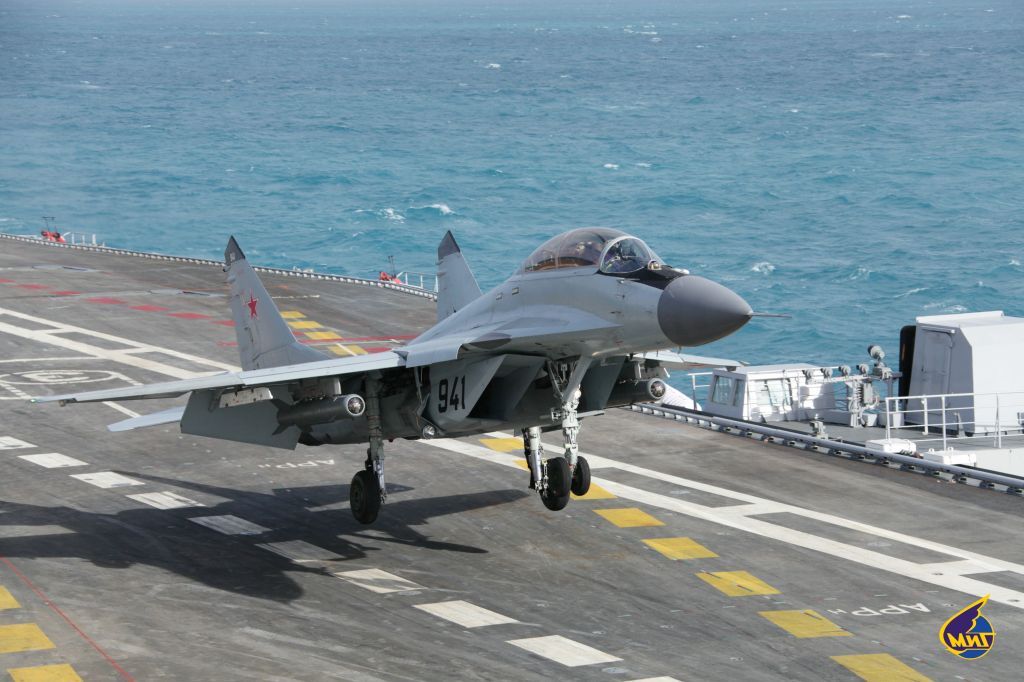
MiG-29K fighter
Another fighter of the fourth generation was the MiG-29, adopted for service in 1987. The widespread use of composite materials, rational aerodynamics and a reliable automated control system provided the aircraft with excellent manoeuvrability. All control, protection and weapons systems for the first time in the world are combined into a single complex controlled by on-board computers. In 1989, on the ship's modification, the MiG-29K first took off from the deck of an aircraft carrier equipped with a springboard. To date, more than 1,600 MiG-29s have been produced, a significant part of which has been exported.
MiG today
The unique aerodynamic configuration of the MiG-29 became the basis for creating an aircraft with fundamentally new capabilities - the multifunctional MiG-35 aircraft complex. This fighter was developed taking into account the experience of operating the MiG-29 in various climatic conditions, as well as the experience of its combat use in hot spots. It was created to work in conditions of dense enemy air defence, with the possibility of basing near the line of contact.
Among the distinguishing characteristics of the MiG-35 are reduced radar visibility, increased service life, aircraft and engine life, and open architecture of airborne equipment. At the same time, the cost of a flight hour is reduced by 2.5 times in comparison with its predecessor. According to its characteristics, the MiG-35 is as close as possible to the fifth generation of fighters. In 2018, a contract was signed for the supply of MiG-35 Russian Aerospace Forces.
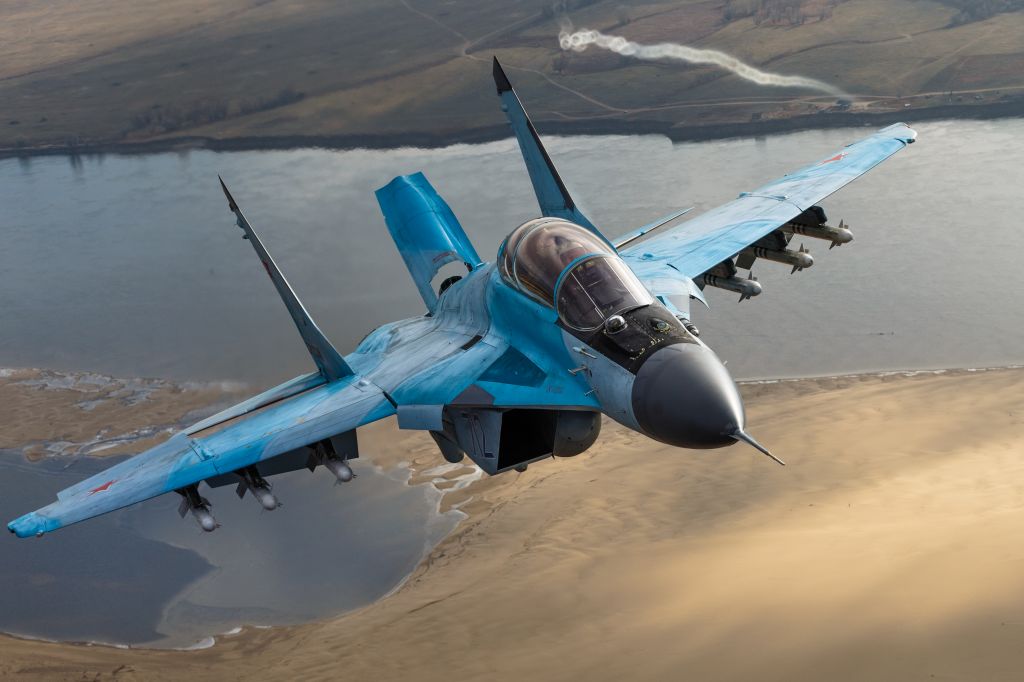
Today, the Russian aircraft manufacturing corporation MiG is one of the few manufacturers that carry out the full life cycle of aircraft: from design and production to after-sales service. The structure of "MiG" includes the Corporate Center, Design Bureau named after A.I. Mikoyan as part of the Engineering Center and Flight Test Center. A.V. Fedotov, Lukhovitsky Aviation Plant. P.A. Voronin, Kalyazinsky machine-building plant and Nizhny Novgorod aircraft plant "Falcon". MiG is a part of the United Aircraft Corporation.
Today, the attention of Migovites is focused on the development of modern aviation systems and the modernisation of previously delivered aircraft. For the new models, training simulators and software are being created by the corporation's enterprises. In countries operating MiG aircraft, the necessary infrastructure is being created, including service centres. In addition, MiG-21, MiG-23, MiG-27, MiG-25 aircraft, which require maintenance, repair and modernisation, are still used in the world. As part of the diversification of production at the MiG sites, the launch of the regional passenger aircraft Il-114-300 is being organised, and a number of promising new projects have been launched in cooperation with Russian industrial companies.
To the 80th anniversary of MiG came a modern company with a high level of digitalisation of production. The planned deliveries of aircraft equipment of the Russian Aerospace Forces to foreign partners are being successfully implemented, development is underway in promising areas, including unmanned vehicles and the PAK DP program (a promising long-range interception aircraft complex).











